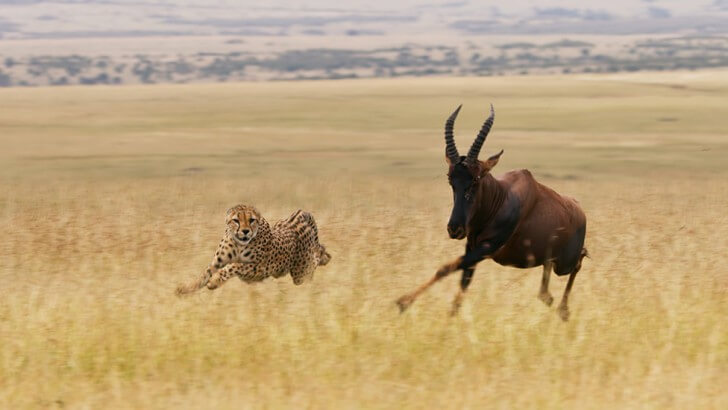

BBC Earth Podcast
Close your eyes and open your ears
Intimate stories and surprising truths about nature, science and the human experience in a podcast the size of the planet.
Seven Worlds, One Planet
Capable of reaching 112km per hour in three seconds, the cheetah is famously the world’s fastest land animal.
However, there’s much more to the fascinating species than this headline grabbing fact, but the most heartbreaking has been their rapid decline in numbers.

The total population of global cheetahs unknown, but estimates suggest there are less than 7000 and IUCN say the population is declining.
Found predominately in scrub forests and savannahs across North, South and East Africa, there is also a critically engaged Asiatic subspecies, Acinonyx jubatus venaticus, of 50-100 individuals now found only in Iran.
Sharing habitats with lions and leopards, cheetah’s are diurnal (active during the day) to avoid directly competing with the other big cats. However, they mainly hunt at dawn and dusk to take advantage of the low sun, giving them the ideal light for hunting.
The cheetah is built for speed. In order to facilitate this, their bodies have features that set them apart from other cats. It can’t retract its claws to help maintain traction, but it is the only cat that is unable to do so. They are built for sprints, as they can only run at those incredible speeds for up to 300 yards. The reason that they can only sprint for such a limited time is that while chasing a prey, a cheetah’s body temperature can reach up to 41 degrees Celsius. The unfortunate prey that are the finish line for the cheetah’s sprints include small antelopes such as gazelle and springboks, but also birds, warthogs and rabbits.

Females tend to remain solitary unless rearing young while males group together to form coalitions- often brothers who stay together after weaning. They will collectively defend an established territory that ensures maximum access to females. As they form these communities, cheetahs need to communicate with each other. Cheetahs are incredibly vocal using a variety of different vocalisations such as purrs, bleats, barks, growls, hisses and high pitched chirping. Scent also plays an important role in communication and cheetahs will urinate throughout their territory to mark it.
Unlike other big cats, cheetahs breed throughout the year, with no defined breeding season. After a gestation of 3 months, females will give birth to a litter of 3-5 cubs, which she will raise alone. Females will hide her cubs in long grass and move them every few days in order to protect them. Cubs are born with a strip of fur that runs from the back of their neck down to their rump. This helps camouflage the youngsters in high grass while following their mother. Sadly, only about 5% of cubs survive to adulthood.
Cheetah habitats are declining due to the increased demand for farming land. Tragically, due to competition with other big cats, cheetah’s do not benefit from protected areas of land as much as the other big cats. The encroachment has increased the contact between cheetahs and human farmers, with cheetahs attacking farmer’s livestock. Farmland expansion has been so invasive in Namibia, that 95% of cheetahs live on farmland.

Work is being down to try and help mitigate the situation. The Cheetah Conservation Fund is based in Namibia and is working to develop best practices that benefit the entire ecosystem upon which the cheetah depends. Their programs take a holistic approach to address the concerns of the wildlife populations and the human communities that share the landscape. An example of their strategies include the introduction of guard dogs for livestock and growing thorn-bush for use in the biomass industry. Thorn-bush helps to divide the cheetahs and the livestock, while also being used as fuel source. Throughout the contient, regional organisations are hard at work to save the cheetah such as Cheetah Outreach in South Africa fighting to save the country’s 500 freeranging cheetah, in Zimbabwe there is the Cheetah Conservation Project and Tanzania has the Serengeti Cheetah Project. Over in Asia, the Iranian Cheetah Society (ICS) hopes to conserve the country’s wild cheetah through community based education programmes that aim to reduce conflict with humans.


Intimate stories and surprising truths about nature, science and the human experience in a podcast the size of the planet.